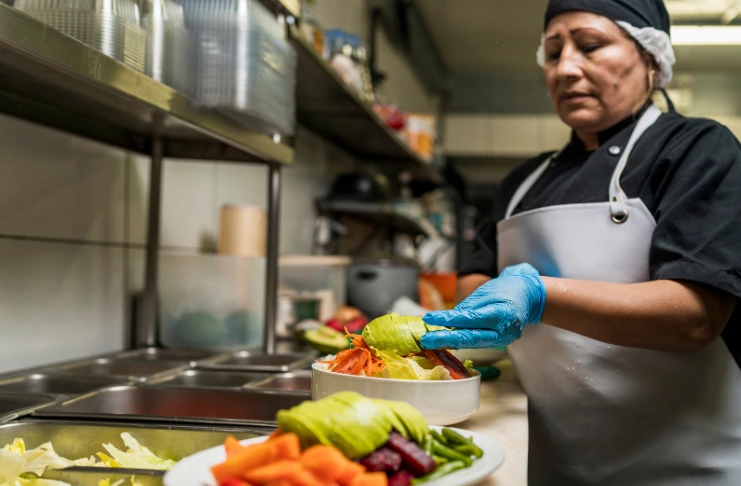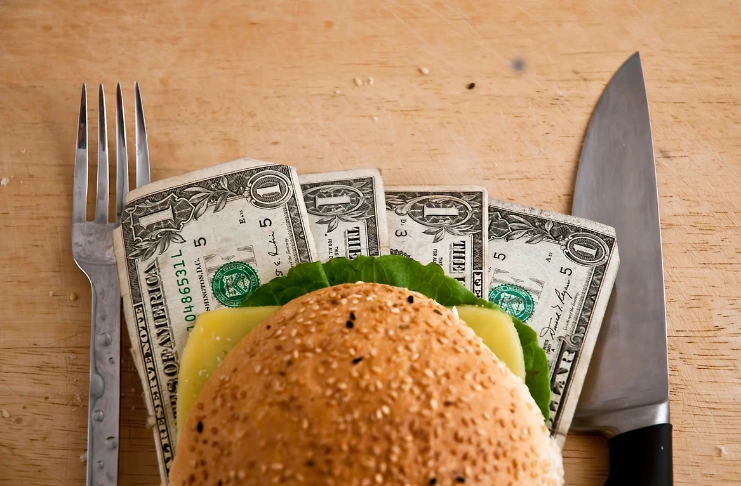
The food cart business has become one of the most attractive entrepreneurial opportunities in the food and beverage industry. With its low startup costs, operational flexibility, and rising demand for convenient street food, more people are choosing this mobile model to bring their culinary dreams to life.
In this comprehensive guide, we’ll cover everything you need to know—from developing your concept and writing a strong business plan to managing operations and navigating health regulations.
What is a Food Cart Business?
A food cart business sells prepared food or beverages from a small, mobile cart rather than a full-sized food truck or brick-and-mortar restaurant. Often seen in parks, busy streets, or outside event venues, these carts serve all kinds of cuisine—from tacos and ice cream to coffee, noodles, or vegan bowls.
Unlike food trucks, food carts are generally non-motorized and can be stationary or pushed to a location. They are ideal for urban areas with high pedestrian traffic and limited real estate. The mobile food format allows for low operating costs and easy experimentation with different locations or menus.
Pros:
- Low initial investment
- Flexibility in location and hours
- Quick setup and scalability
Cons:
- Limited space and menu options
- Weather dependency
- Complex permitting in some cities
Step-by-Step Guide to Starting a Food Cart Business
Step 1: Research the Market & Identify Your Niche
Before diving into the food cart world, it’s crucial to research the market and define your concept. Look into the local food scene: What street food is trending? Are there too many burger stands and not enough vegan carts?
Tips:
- Visit farmers markets, food festivals, and mobile food zones.
- Analyze customer preferences and pain points.
- Research competitors and find a gap in the market.
Example: In New York City, a Filipino street food cart quickly gained popularity because it introduced something new in an area saturated with hot dogs and pretzels.
Step 2: Create a Business Plan
Every successful food cart business starts with a solid business plan. This document outlines your goals, target audience, financial projections, and operational roadmap.
Key Sections to Include:
- Executive Summary
- Your Unique Concept
- Target Market
- Menu and Pricing
- Startup and Operating Costs
- Sales and Marketing Strategy
- Financial Forecasts
Example: If your concept is a vegan smoothie cart, your business plan might focus on office parks, promoting health benefits, and using organic ingredients.

Step 3: Get Licenses, Permits & Insurance
Your food cart business must comply with local regulations, including food safety, vending, and health department rules.
Requirements may include:
- Business license
- Food vendor permit
- Health department inspection and approval
- Food handler’s certificate
- Liability insurance
Note: Requirements vary by city. For instance, Los Angeles has a more streamlined process than San Francisco, where zoning and vending laws are stricter.
Step 4: Choose the Right Location
Choosing the right spot can make or break your mobile food venture. Foot traffic, accessibility, and proximity to your target audience are key.
Ideal Locations:
- Office complexes
- Universities and campuses
- Parks and tourist hotspots
- Outside event venues and stadiums
Example: A coffee cart near a subway entrance can generate hundreds of daily customers during the morning rush hour.
Make sure to understand local zoning laws and parking or vending restrictions before finalizing a location.
Step 5: Design or Purchase Your Food Cart
Now comes the fun part—setting up your actual cart. You can buy a new or used cart or customize one to fit your brand and operations.
Things to consider:
- Equipment: grills, refrigerators, storage
- Branding: cart signage, logo, colors
- Hygiene: stainless steel surfaces, handwashing station
- Mobility: wheels, size, towing options
Example: A crepe cart might need dual burners, refrigerated topping storage, and a visible counter to entertain passersby.
Your cart should align with your concept and support safe food preparation per health standards.
INDUSTRY INSIGHT
The food truck and mobile food business continues to experience significant growth. In 2024, the global market was valued at $4.52 billion, and it is expected to expand to $7.89 billion by 2033, with a CAGR of 6.38%. This steady upward trend highlights the increasing demand for street food businesses and the profitability of launching a food cart business in the evolving market.
Step 6: Develop Your Menu
Keep your menu concise, cost-effective, and easy to prepare. Remember, space is limited on a cart, so every item should sell well and be easy to assemble quickly.
Tips:
- Focus on 3–6 main items with optional add-ons.
- Use ingredients across multiple dishes to reduce waste.
- Highlight specialties and dietary offerings (e.g., vegan, gluten-free).
Example: A taco cart can offer 3 protein choices, 2 tortillas, and 3 sauces—enabling multiple combinations from minimal inventory.
Use your menu to reflect your concept and communicate your brand’s identity.
Step 7: Set Up Operations & Inventory Management

Running a food cart business plan means staying on top of day-to-day operations and supplies. Unlike a large restaurant, you can’t afford to run out of stock mid-shift.
Key operational elements:
- Daily opening and closing checklists
- Ingredient prep schedules
- Inventory and vendor tracking
- Equipment maintenance routines
Pro Tip: Use mobile POS systems and inventory apps to simplify tracking and reordering.
Step 8: Hire and Train Staff (If Needed)
You may start solo, but if your business grows, you’ll need help with prep, serving, or managing cash flow.
Hiring tips:
- Look for reliability and friendliness—your staff represents your brand.
- Train employees in food safety, order-taking, and handling difficult customers.
- Ensure all workers have valid food handler certifications.
Having a consistent and efficient team allows you to scale your mobile food operations and deliver a consistent customer experience.
Step 9: Market Your Food Cart
Marketing is essential for visibility, especially when you don’t have a permanent storefront. Create a brand identity that reflects your food and vibe.
Marketing Tactics:
- Social media: Post daily specials, behind-the-scenes shots, and location updates.
- Google Business Profile: Show up in local searches for “best street food near me.”
- Loyalty programs: Offer digital punch cards or SMS-based discounts.
Tip: Your marketing should promote both your health-focused messaging and your unique concept.
Step 10: Track Sales & Optimize Performance
To run a profitable food cart business, you must monitor performance and make data-driven decisions.
Track:
- Daily sales and best-selling items
- Cost of goods sold (COGS)
- Peak hours and slow days
- Customer feedback
Tools to Use:
- POS systems like Square or Toast Go
- Excel or Google Sheets for cost tracking
- Customer feedback apps
Startup Costs Breakdown
Here’s a rough breakdown of what it may cost to launch a food truck business in the U.S.:

- Food Cart (new or used): $3,000 – $10,000
Depending on size, customization, and equipment built in. - Permits and Licenses: $500 – $2,000
It varies by city and includes vendor permits, health licenses, food handler cards, etc. - Equipment and Utensils: $1,000 – $3,000
Includes cooking tools, food storage containers, and serving gear. - Initial Inventory: $500 – $1,000
First batch of ingredients, packaging materials, beverages, etc. - Marketing and Branding: $300 – $1,000
Logo design, signage, social media setup, flyers, and launch promotions. - Insurance and Legal: $500 – $1,500
Liability insurance, legal consultations, and business registration. - Miscellaneous (POS system, uniforms, cleaning supplies):
$500 – $1,000
Total: ~$6,000 – $20,000 depending on location and scale.
If budget is tight, consider leasing a cart or joining a food truck park that offers shared equipment and utilities.
Challenges and How to Overcome Them
Starting a food cart business isn’t without obstacles. Here are some common challenges and tips to overcome them:
- Permit Delays or Restrictions
→ Research local laws early. Work with a consultant if needed. - Weather-Dependent Sales
→ Set up covered areas or operate seasonally in better climates. - Health Inspections and Regulations
→ Maintain rigorous cleaning routines and always keep logs. - Limited Menu Space
→ Innovate with minimal ingredients and rotating specials. - Cash Flow Issues
→ Track daily earnings, minimize food waste, and use a POS system.
Success Tips for Running a Profitable Food Cart
- Keep it simple: Don’t overcomplicate your offerings. One great item is better than ten average ones.
- Focus on branding: Memorable names, signage, and uniforms make a difference.
- Prioritize speed: The faster you serve, the more you sell.
- Stay consistent: Regular customers value reliability in quality and timing.
- Evolve based on feedback: Customers will tell you what they love—listen.
Conclusion
Starting a food cart business is an exciting and attainable path to entrepreneurship. You can build a profitable and sustainable venture with the right business plan, a compelling concept, and a deep understanding of health, street food, and mobile food operations.
Whether you dream of serving gourmet grilled cheese, Asian fusion tacos, or superfood smoothies, now is the time to act. Take your passion to the streets—and let the world taste what you’ve got cooking.
Frequently Asked Questions
Popular food cart items include hot dogs, tacos, coffee, ice cream, and ethnic street food like dumplings or kebabs. Foods that are portable, quick to prepare, and low in cost but high in demand typically perform best. Simplicity, taste, and speed are key factors in high sales.
You need a business license, food worker card, mobile food unit permit, fire department inspection, and possibly a commissary kitchen agreement. Local city or county health departments also have regulations. Requirements can vary, so check both state and local guidelines before starting your food truck business.
Yes, one person can run a food truck, especially with a simplified menu and efficient prep. However, multitasking is required—cooking, serving, handling cash, and cleaning. For busy locations or larger menus, hiring helps improve speed and customer experience. Solo operations work best with limited offerings.
Starting with no money requires creative strategies—apply for small business loans or grants, find investors, or use crowdfunding. Consider leasing equipment or partnering with commercial kitchens. Starting as a food cart or pop-up stand before scaling into a truck can also reduce upfront costs.
Yes, food truck parks can be profitable if well-managed. They attract diverse crowds, reduce overhead for individual trucks, and generate steady foot traffic. Profitability depends on location, amenities, vendor mix, and events. Successful parks often include seating, entertainment, and consistent marketing to draw in customers.
In Michigan, you need a mobile food establishment license, business registration, food safety certification, and fire inspection approval. Local counties may require additional permits. If using a commissary kitchen, documentation is also required. Always verify with your local health department for updated compliance requirements.
The cost of a food truck license in Minnesota varies by city but typically ranges from $300 to $1,000 annually. Additional fees apply for health inspections, fire permits, and background checks. For accurate pricing, check with the Minnesota Department of Health and your local city offices.
Yes, a food cart is a great business with low startup costs, operational flexibility, and high-profit potential. It’s ideal for testing food concepts and building a customer base. Success depends on location, menu, and consistency. Many successful restaurant brands started as food carts or mobile stands.
High-footfall areas like business districts, college campuses, parks, festivals, and transit hubs are ideal for food carts. Choose locations with heavy pedestrian traffic and minimal competition. Proximity to offices or event venues can boost daily sales, especially during lunch or evening rush hours.
To open a small food stand, create a business plan, choose a menu, get required permits, and purchase or lease a food cart or booth. Ensure you meet health department standards and pick a location with high visibility. Start small, test your concept, and scale as you grow.








